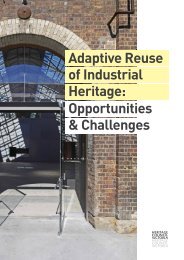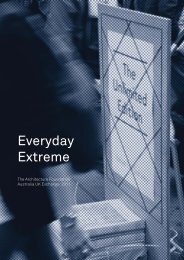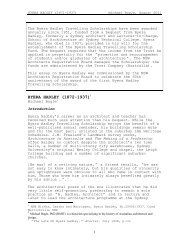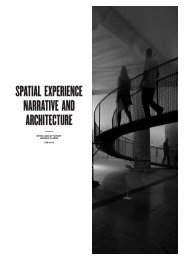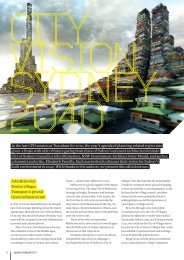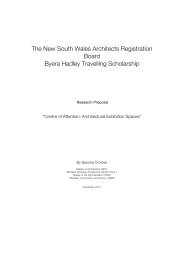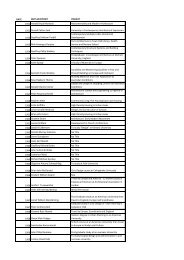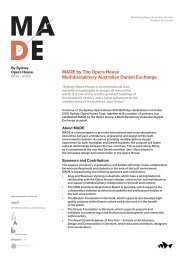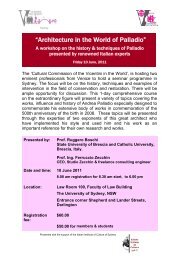4 unités LC - Architecture Insights
4 unités LC - Architecture Insights
4 unités LC - Architecture Insights
You also want an ePaper? Increase the reach of your titles
YUMPU automatically turns print PDFs into web optimized ePapers that Google loves.
Even before the completion of its construction, the ‘Unité’ in<br />
Marseille was already highly controversial simply due to the nature<br />
of its unconventional design. This fact, added to the extended<br />
construction period and the growing cost of the building, evidently<br />
heightened contention for the project, leading to an incredibly<br />
passionate and inflammatory debate.<br />
The Unité d’habitation in Marseilles became instantly infamous,<br />
word of le monstre 20 was spread by the national media and people<br />
flocked from all over the country to see it. Some praised it for its<br />
order and logic, and the “new way of life” that it proposed –<br />
“Le Corbusier’s Unité d’habitation …holds the greatest sum of<br />
experiences: of construction, of plasticity, in the use of different<br />
surfaces, the sunny aspect, the climatic control, and the<br />
habitability. …an undeniable architectural success.<br />
…But it is not simply a question of architecture. It is the<br />
experience of a new way of life that is offered to mankind.” 21<br />
Whilst others criticised it for being insalubrious and inhumane –<br />
“Here you will find, brought together, all of the greatest causes of<br />
insalubrity, …the directors of the departments of Health and the<br />
advisors of the departments of hygiene are fighting, with out<br />
cease, to prohibit the habitation of the building.” 22<br />
The polemical nature of the building lay, not only in its aesthetics,<br />
but also in the ethics of the principles upon which it was built. Le<br />
Corbusier’s had already been highly criticised for his socialistic<br />
ideals, expressed through his theories of functionalism and<br />
standardisation 23 (the very theories that formed the basis of the<br />
‘Unité’ design). And even fellow architects that credited Le<br />
Corbusier for his innovation and ideas, began to question his<br />
103 104<br />
45-46. Middle-class residents<br />
that were quick to move in to<br />
the ‘Unité d’habitation’ of<br />
Marseille, 1959.<br />
judgement in this case: “Il est des choses qui ne se font pas. Tout<br />
n’est pas possible […]” (‘Some things are just not done. Not<br />
everything is possible […]’), said R. Rouzeau in La Journée du<br />
bâtiment (January 25-26, 1948), with regards to the construction of<br />
the ‘Unité’ in Marseille. 24<br />
On paper, Le Corbusier’s ideas were controversial enough, so when<br />
these ideas achieved a physical reality, the reaction of many was no<br />
less than outrage. But for each of the passionate objectors, there<br />
were an equal amount of admirers. 25 Le Corbusier had managed to<br />
hold a consistent following over the years, and those drawn by the<br />
lifestyle and design of the building, many of whom were architects<br />
and designers, were quick to move in.






